History Archives
Waitaki Boys' was founded in 1883 and is one of the oldest schools in the country. The magnificent main buildings, in Oamaru stone, date from that period.
There is so much history at Waitaki Boys', both within the school itself and within the staff and students that have walked the hallways. This page will be ever evolving to add to this history.
T.H. (Holmes) Nisbet and R (Bob) L.M Duthie
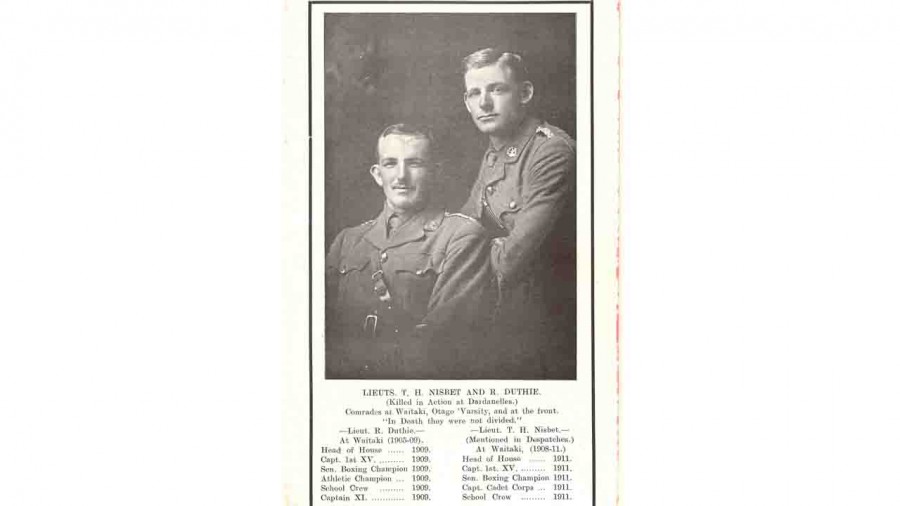
The Keddell Brothers
Gerald Keddell
Born 1885. Attended WBHS 1898 - 1902. Junior Athletics Champion 1898/9 Senior Athletics Champion 1901/2. After leaving school he became a qualified solicitor working in Southland until the outbreak of war in 1914. It was in the field of Athletics that he truly excelled and most particularly in the events of hurdles and long jump. He first won the NZ champs hurdles in 1905 and the long jump in 1908. By 1911 he had set an Australasian record in the 120 and 440 yard hurdle events and in 1908 he set a NZ long jump record of 23ft - 3in (roughly 7m!) which still stood at the time of his death in 1923. From 1910 to 1912 he went to Australia and won the Australasian hurdles.
Like so many great athletes he returned from fighting in WWI a broken man and his health was never the same. He was one of four brothers and his youngest brother Rex (see story below) was killed at the Battle of Passchendaele in October 1917. Another brother John also fought in the Boer War 1899 - 1902 and rode a horse called 'Waitaki Boy' which had been gifted by the school!
Gerald passed away in Clyde, central Otago in December 1923. He was 38 years of age.
The 1924/24 Waitakian recounts "Tributes to the memory of the deceased have been lavishly paid by the press of the Dominion ... the whole of sporting world of New Zealand keenly regrets the passing of Gerald P Keddell, Southland's champion athlete. He was, everyone who knew him will admit, the finest personality ...one who never flattered himself...but was willing to accept the brillancy of others.."
He is remembered today as an inaugural inductee into the Sports Hall of Fame and the Keddell Memorial plaque still stands in the Blundell Block (outside of B1). The Keddell Cup is awarded to the Senior Long Jump champion.
Rex Keddell
Attended WBHS. Unsure as Waitakian's only began in 1906 but he did leave in that year. After school he worked briefly in Nelson before returning to Oamaru to work for Meek brothers and then on to work for his brother Gerald in Otautau. It is worth noting that from the 1912 Waitakian at a 110yd hurdles race in Dunedin he tied with his brother who (see above) at that time was no less than the Australasian champion. In 1914 he enlisted in the Fourth reinforcements, seeing action firstly at Gallipoli before heading to the Western front in Northern France. In June 1916 he suffered serious wounds having his thigh shattered and a bullet to the face. It took 8 months in hospital for his wounds to heal. He was ordered back to New Zealand but refused and he was finally allowed to return to action in France having to forgo his rank of sergeant for that of a private! His comrade's letters speak of his determination and willingness to undertake unpleasant and risky work. His actions speak of an incredibly brave and loyal young man.
Rex was killed at the Battle of Passchendaele on October 12th 1917 (coincidentally the same day as Cyril Molloy - Head Boy of 1909)
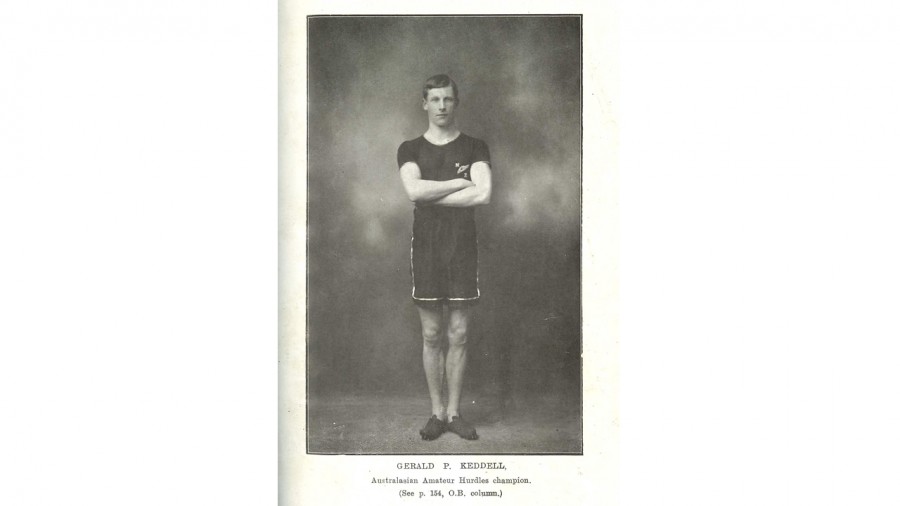
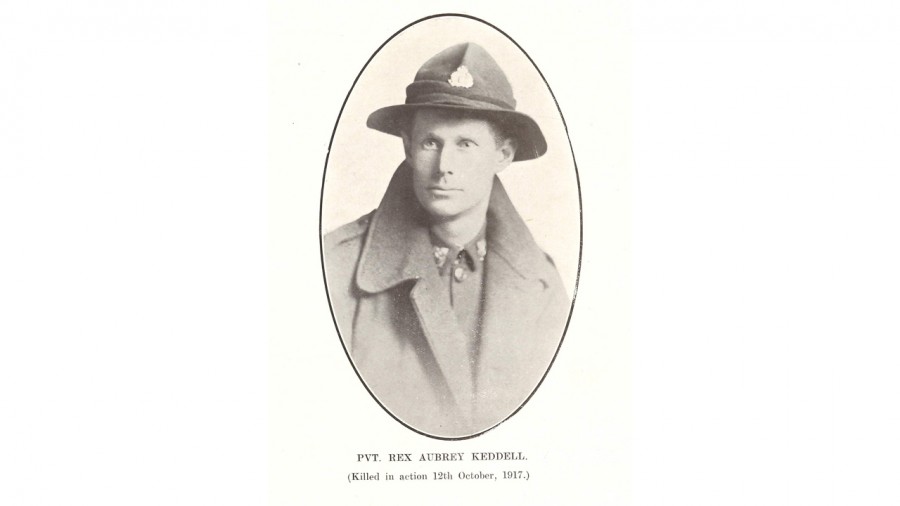
Malcom McCullogh and Dudley Chisholm
Malcolm McCullogh - Mr McCullogh arrived at Waitaki at the start of 1907 having been an old boy of Otago Boys' and having previously taught at Nelson College with Milner. He would go on to teach at Waitaki for 32 years, 24 of those as First Assistant (Deputy Rector) from 1907 - 1938. He was also acting Rector on numerous occassions and the school never wavered from it's excellence during these times. In class he taught French and commerce. As a former representative rugby player and rower he had huge influence in these activities. For ten years he coached the 1st XV and he established rowing at the school. For a number of years he played for the 1st XV and 1st XI in 'open' grade competitions. He also played rugby for North Otago for a number of years. KS McDonald's History of the School written in 1958 beautifully sums up the impact Malcolm McCullogh had on our school
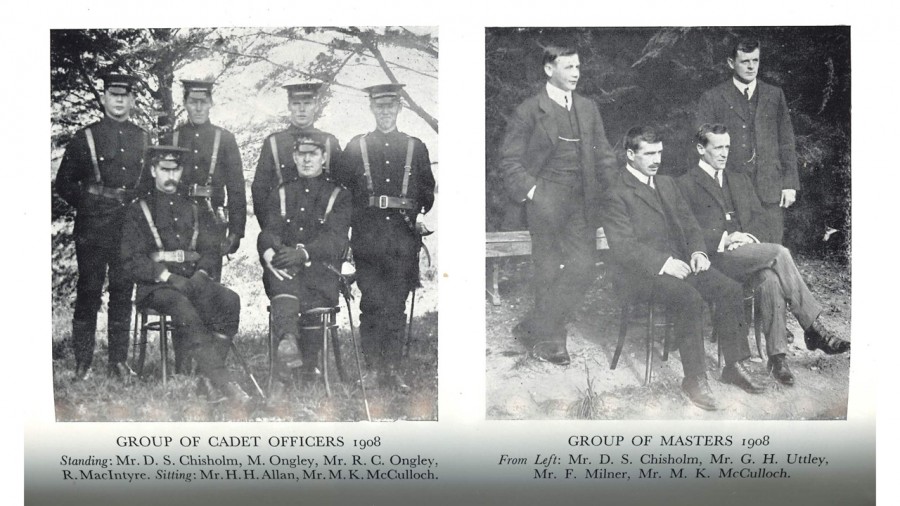
Milner and Jennings
Note - In the photo taken of Waitakians at Gallipoli in mid 1915, Jennings is in the front row, right hand side.
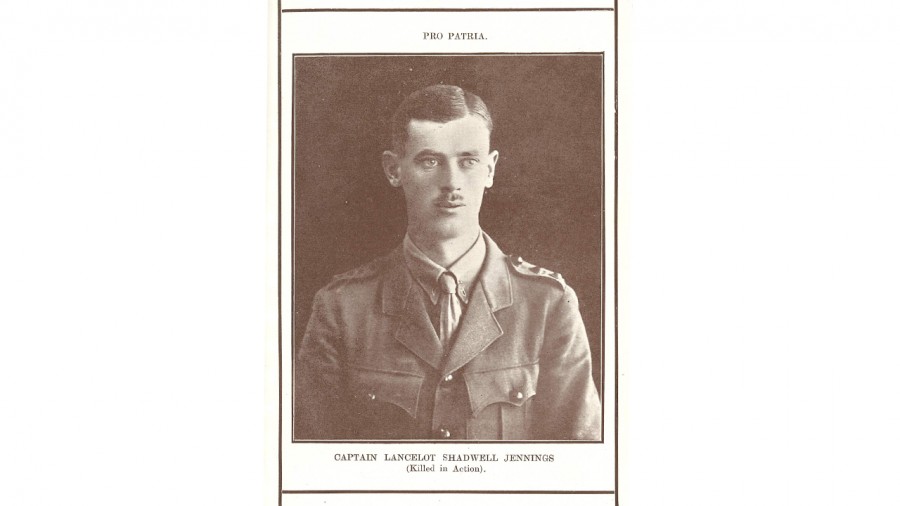
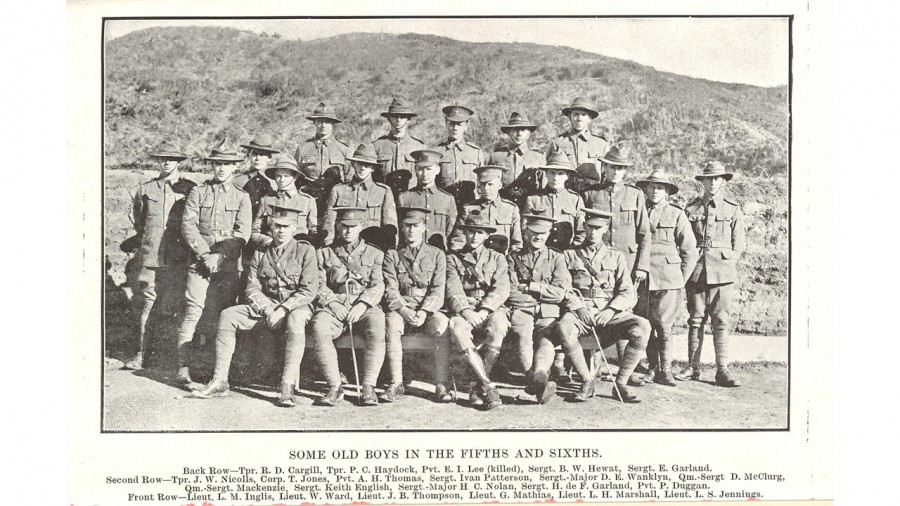
Original School Bulidings
As you look at the school from the entrance the magnificent facade actually comprises three buildings. North to South they are the Rectory Building (built 1882/3 - today this comprises the Rectors residence to the main school office); the Middle Block (built 1904 - today this comprises the Rectors office to B5) and the South Wing (built 1911/12 - today this comprises downstairs from B4 to B1 and upstairs from B23 to B20). The Middle Block and South Wing were built to accommodate growth in school numbers and the need for new classrooms. The South wing finished in 1912 had four laboratories downstairs, and upstairs there were three large classrooms, an art room and a staff room.
It is difficult today to imagine what the school must have looked like to the 19 original pupils who attended the school on the first day on May 15th 1883. The town boundary was then at Orwell St (Orana Park today). There were few buildings north of this. The new double story Oamaru stone building would have been seen from afar standing alone on a desolate plain between the railway line and the sea. A rough cart track ran from the main road and the landscape on both sides of the railway line was dominated by lagoons and marshy land. The creek could only be crossed by a plank. It must have made for quite a depressing scene. The future of the school itself was also a depressing one.
There was much opposition to the new school amongst the community for a number of reasons. There was already a District High School in Oamaru; many also felt secondary schooling was unnecessary - it was more important to get a job when finishing primary school; and moreover the Waitaki High School was a fee-paying private school and seen as elitist. In fact in 1886 the school's future was subject to a parliamentary enquiry - only the influence of a number of the Board of Governors within Parliament saw it continue. By 1895 the school's future was still in serious doubt as it ran into financial difficulties with a roll of less than 40 and no boarders. Two events were to turn around the fortunes of the school and lay the foundation for Waitaki Boys' to become one of the great boys' schools of the British empire. Firstly, the Education Act of 1903 made education free for all (who passed a moderately difficult qualifying test) and in 1897 the appointment of the inspirational Dr J.R. Don as Rector to be followed of course by Frank Milner in 1906, who would go on to revolutionise the school.
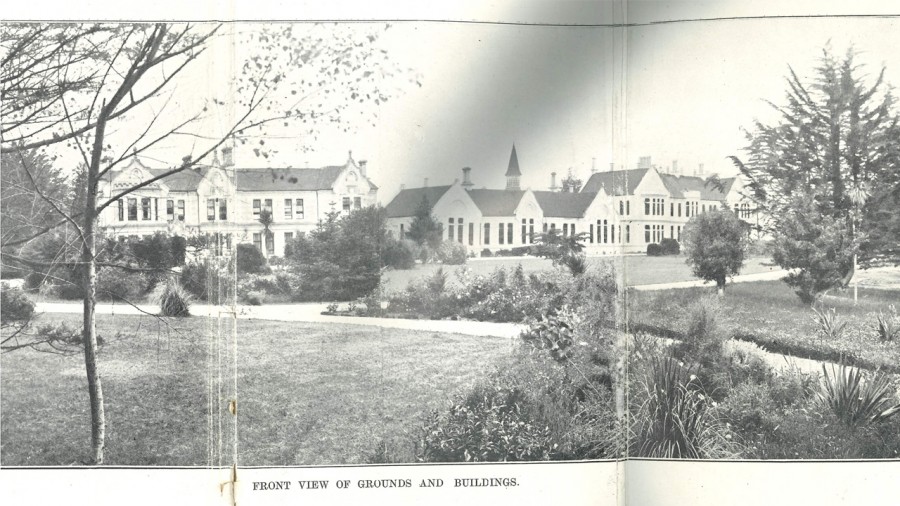
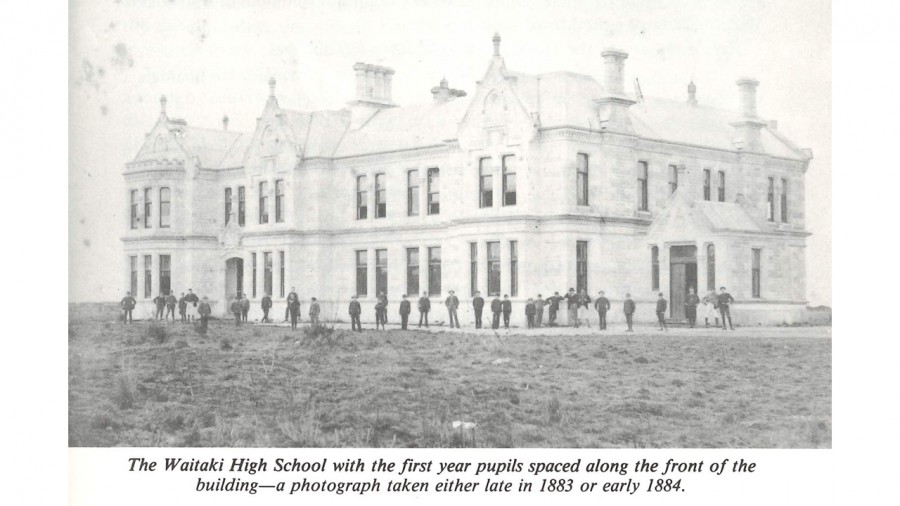
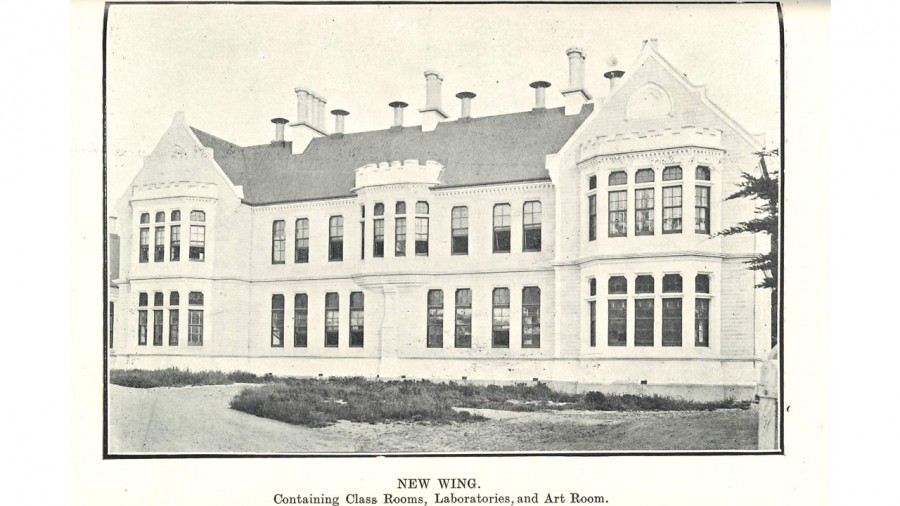
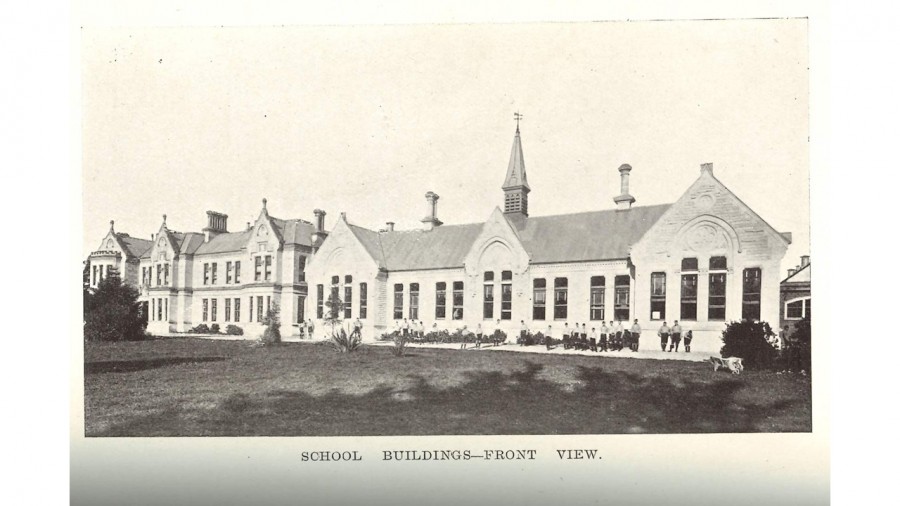
Athol Hudson (Waitaki Boys' 1908 - 1911)
Athol attended Waitaki Boys’ as a boarder from 1908-11. In 1911 he received the honour of being awarded Dux of the school as the top academic student. He received a scholarship to Victoria College, Wellington.
From the 1911 Waitakian he was the Head of the Camera Club, a Lieutenant in the Cadet Corps, the Senior Swimming Champion and runner up in the lightweight Boxing. Ironically his only success at the Athletic Sports was in winning the one mile walk .It was from 1912 to 1914 whilst at Victoria College that his athletic career went from strength to strength. His specialty was the 3-mile distance (4.8km) and in turn he won the Victoria College Championship, the NZ University Championship and the Wellington Provincial Championship.
The highlight of Athol Hudson’s athletics career came in early 1914. In February he won the NZAAA (Amateur Athletics Association) 3 mile championship in Dunedin.
Following this victory, Hudson won both the mile and 3 mile events at the Easter University Tournament held in Christchurch as well as the lightweight boxing for good measure.
“At the final meeting of the 1913-1914 summer season held by the NZAAA in honour of visiting American athletes, Athol Hudson again demonstrated his extraordinary athletic ability as a long distance champion. He completed the 3 mile in 15min 133/5sec.
Upon the outbreak of WW1, Athol immediately enlisted and was a part of the advanced guard sent to capture Samoa. In 1915 he returned to NZ to complete his Bachelor of Science degree at Victoria. As he was finishing his studies he was awarded New Zealand’s highest scholastic distinction – The Rhodes Scholarship. He was the sole recipient of that year and the first of five Waitakian’s to be given this great honour. The Rhodes Schoalrship was then and still is today the most prestigious international graduate programme in the world with a vision of quote “to develop outstanding leaders to promote international goodwill.”
He was offered a place at Oxford University, England to study Chemistry.
However once again, war service intervened and in early 1916 he was with the NZ forces on the Western Front as a commissioned officer.
Tragically Lieutenant Athol Hudson was killed at the Battle of the Somme on 14th July 1916 whilst leading a sniping raid against the German frontline. His death at the age of 22 was met with huge sadness by the Waitaki Community.
From the 1916 Waitakian it states “Among Waitakians, Athol Hudson was held in the highest esteem, regard and respect. His life seemed to be given up entirely to public spirited service. His unfailing modesty and his transparent unselfishness of disposition endeared him to all.”
Athol Hudson is remembered at Waitaki Boys’ on the stone monument at the entrance to the school and the brass plaque in the Hall of Memories which recognises our war dead.
His family also donated a Memorial Cup in his name – the Athol Hudson Cup for the Senior Cross-Country Champion. The Hudson Cup was first presented in 1917. It was reintroduced in 2019 and the current holder is Tasman Selfe. He was also recognised as an original inductee into The Waitaki Boys’ High School Sports Hall of Fame in 2019.
Athol Hudson
Waitaki Boys’ 1908-1911
Dux 1911
NZ 3 mile champion, NZ Universities 3 mile Champion 1914
Rhodes scholar 1915
“Among Waitakians, Athol Hudson was held in the highest esteem, regard and respect……his unfailing modesty and his transparent unselfishness….endeared him to all” - Waitakian 1916
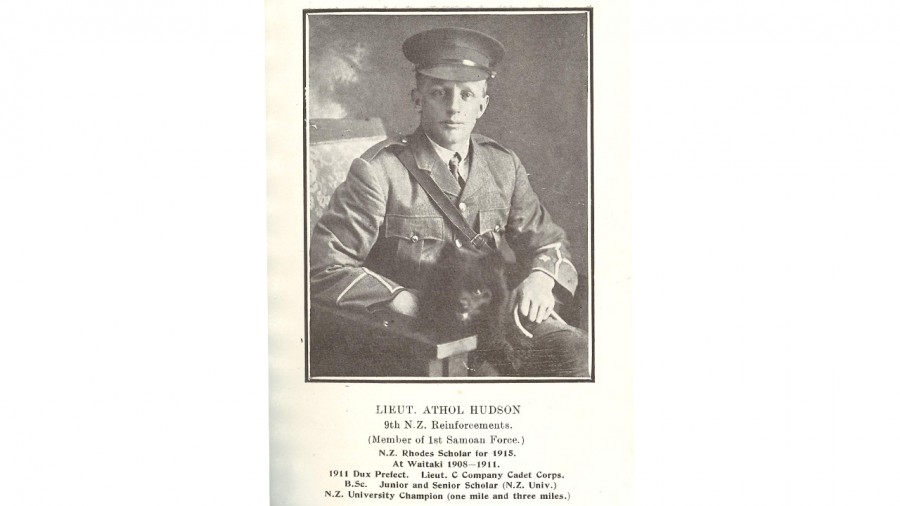
Cyril Molloy
In 1908 Cyril Molloy was already an outstanding young man. Deputy Head Boy, accomplished scholar and a good enough rugby player to represent the North Otago Senior Team (as a Year 12!).
In 1909 he was recognised as the Head Boy at Waitaki Boys’ High School. He left school to attend Otago University where he studied law. He also represented Otago at Rugby. After finishing University, he travelled to Westport where he was working as a lawyer whilst figuring prominently in local rugby, Rowing and Boxing (as he had done at school).
He embarked for war from Wellington in September 1916 aboard the HMS Pakeha. As Commander of the 4th Otago Company, Captain Molloy was among the first wave of NZ troops to attack the German trenches at Messines in Northern France. He was injured in this battle, receiving shrapnel wounds to his shoulder and the back of his head.
Having survived the battle of Messines, Cyril Molloy was one of the 842 to lose their lives at the Battle of Passchendaele on October 12, 1917.
In reporting his death, the Oamaru Mail described him as “a good athlete and a brilliant pupil” he would “be remembered by many friends as of winning disposition and one fond of all sports”.
The N.O Times (yes Oamaru had two daily newspapers at this time) published extracts from his commanding officers, “He was one of our most brilliant officers” wrote Brigadier-General Braithwaite. “He did not know the meaning of fear. He was absolutely adored by his men, who would have followed him anywhere”.
The 1918 Waitakian paid tribute to the schools fallen son, one of many who inspired the construction of the Hall of Memories.
“At Waitaki, his lion-hearted prowess in the boxing ring. In football (rugby) and rowing will not be forgotten for many a year. But in far higher measure he served the school well. As head prefect in 1909 he set a stoic example of devotion to work and duty and gained the abiding respect of staff and boys alike”.
In January 1918, Captain Molloy was awarded a posthumous Military Cross for gallantry. He lies in the Passchendaele New British Cemetery in Belgium. Today, a memorial cross in his honour stands in front of an oak tree on the corner of Severn and Lune Streets.
Captain Cyril Molloy – MC (1889 – 1917); Head Boy 1909 – A truly great Waitakian.
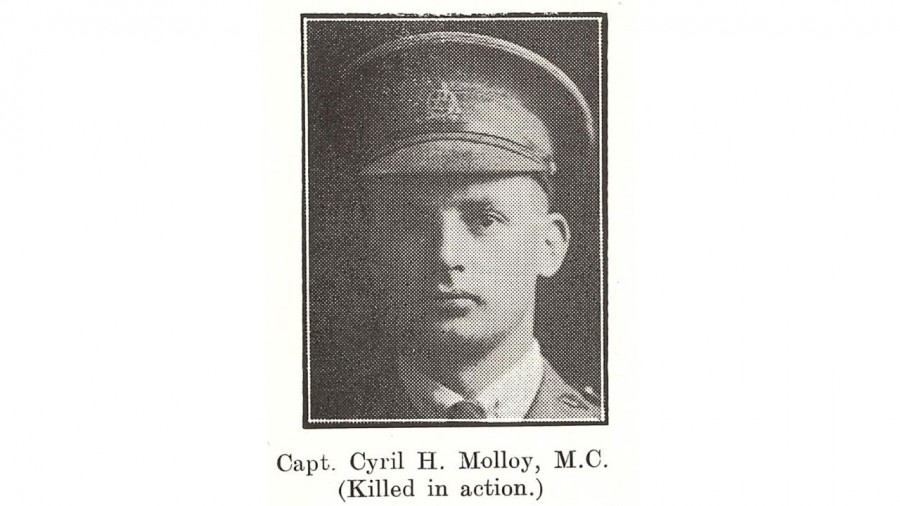
The 1908 XV
See the photo below. In continuing the story of the Ongley Family. The highly successful 1st XV of 1908 was captained by P.A (Gus) Ongley, also the Head Boy of that year.
The were an impressive team (remembering tries were only worth 3 points back then). Beat Timaru Boys 70-0; lost to Christchurch Boys 6-11; beat Otago Boys 13-0 and beat Southland Boys 13-0.
C.H. Molloy represented the North Otago Senior team.
Note: there were only 15 players as teams had no reserves.
These young men were the generation that left for WW1 which started in 1914. The results of the “Great War” were catastrophic.
Back Row
Lieutenant D.G Deans – School prefect 1909/1910, wounded at Gallipoli 1915
H.M.P Marshall – School Prefect 1908
Standing
Lieutenant R. Duthie – School Prefect 1908/1909, killed at Gallipoli 1915
Lieutenant G. Charters – Wounded in France, 1917. Awarded Military Cross for bravery.
Private L.H Jones – Canterbury Mounted Rifles, France
Captain C.M Rout – School Prefect 1908, wounded in France 1917, his brother was killed in France 1915.
Captain C.H Molloy – Head Boy 1909, killed at Passchendaele in October 1917, awarded Military Cross for bravery.
Sitting
J.T.T Forbes
Lieutenant P.A Ongley – Head Boy 1908, 27th Reinforcements N.Z.E.F, killed in France 1918.
Lieutenant K.W Tosswill – School Prefect 1908, 9th Royal Warwickshire’s, wounded Palestine 1918, mentioned in despatches for bravery.
Lance-Corporal D.R Carter – Canterbury Mounted Rifles, killed at Gallipoli 1915.
In Front
Captain P. Hudson – British Expeditionary Force, wounded France 1917.
Captain E. Croft – Royal Field Artillery, wounded in France 1917, died of injuries in London 1918, awarded the Military Cross for bravery.
Captain A.McP. Marshall – School Prefect 1909, NZ Medical Corps.
Of the 15 young men who made up the 1908 1st XV
- 5 were killed
- 5 others were wounded
- 3 were awarded the Military Cross for bravery
- 11 were commissioned officers.
Ka tamatane o te Waitaki
Ki te riri, ki te riri, ki te riri hi!
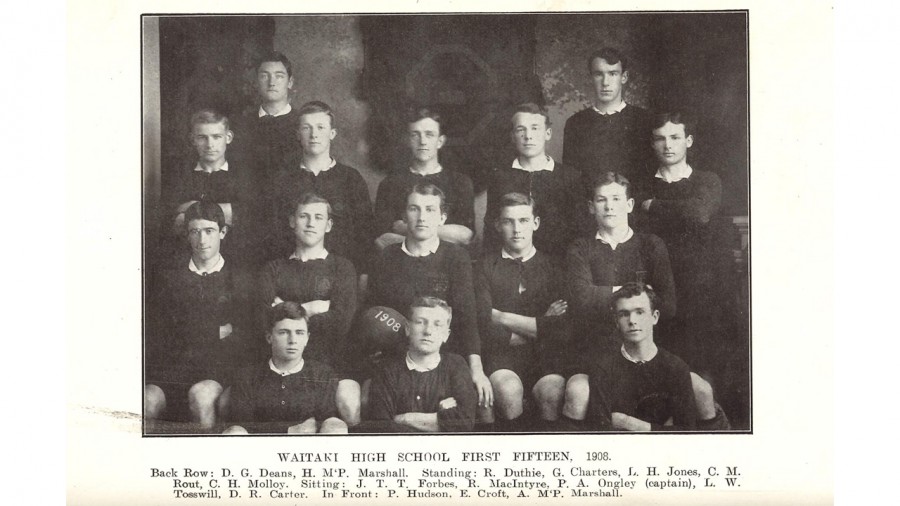
The Ongley Family
- F. W. (Fred) Ongley (born 1879, died 1969) - Due to no school magazines between 1891 and 1906 there is no information on his school career. Noted - he did score a lot of runs for the Oamaru CC against the 1st XI from 1906 - 08. Served as a Lawyer in Oamaru from 1905 - 1925. Later became a High Court Judge in Wellington. Interestingly Fred had seven children, three of whom he named after his brothers!
- R. C (Bob) Ongley (see photo below) born 1887, died 1959 - He left WBHS in 1905. In K.C McDonalds "History of Waitaki Boys 1883 - 1958 it states "...this remarkable boy. He was a member of the First XI from 1902-05 captaining the team during his last 3 years. He was in the first XV from 1903-1905 captaining the team in 1905. In that year he represented both North Otago and Otago seniors! From 1903 - 05 he was the Senior Athletics champion. His record in the senior 100 yards is yet to be broken (written 1958 - 53 years later). He gained University Entrance in 1904 and was Dux of the school in 1905. He came back to the school as a teacher in 1908 (see photo below). It has been difficult finding much more information I have discovered that he finished teaching at Waitaki at the end of Term 1 1912 to pursue a legal career in Palmerston North and he doesn't appear to have served in WW1. He married in 1915 and had 2 children, his son Patrick Augustine born in November 1918 was named after his brother killed that year. Bob died in Taihape in 1959. Perhaps further reading will uncover more information.
- Montgomery (Mont) Ongley M.A, BSc, FRSNZ (born 1888, died 1976) - Head Boy 1906/07; Dux 1905,06,07. A pre-eminent NZ geologist of the twentieth century. His biography was in yesterday's article.
- P. A (Gus) Ongley (born 1890, died 1918) - Original school prefect 1906, Captain 1908 1st XV. Head Boy 1908. He studied at Victoria University and was teaching at Wellington College when he enlisted in 1916. 'Gus" was killed by a German sniper at Baupaume, Northern France on August 1918 (less than 3 months before WWI ended). Lest we forget.